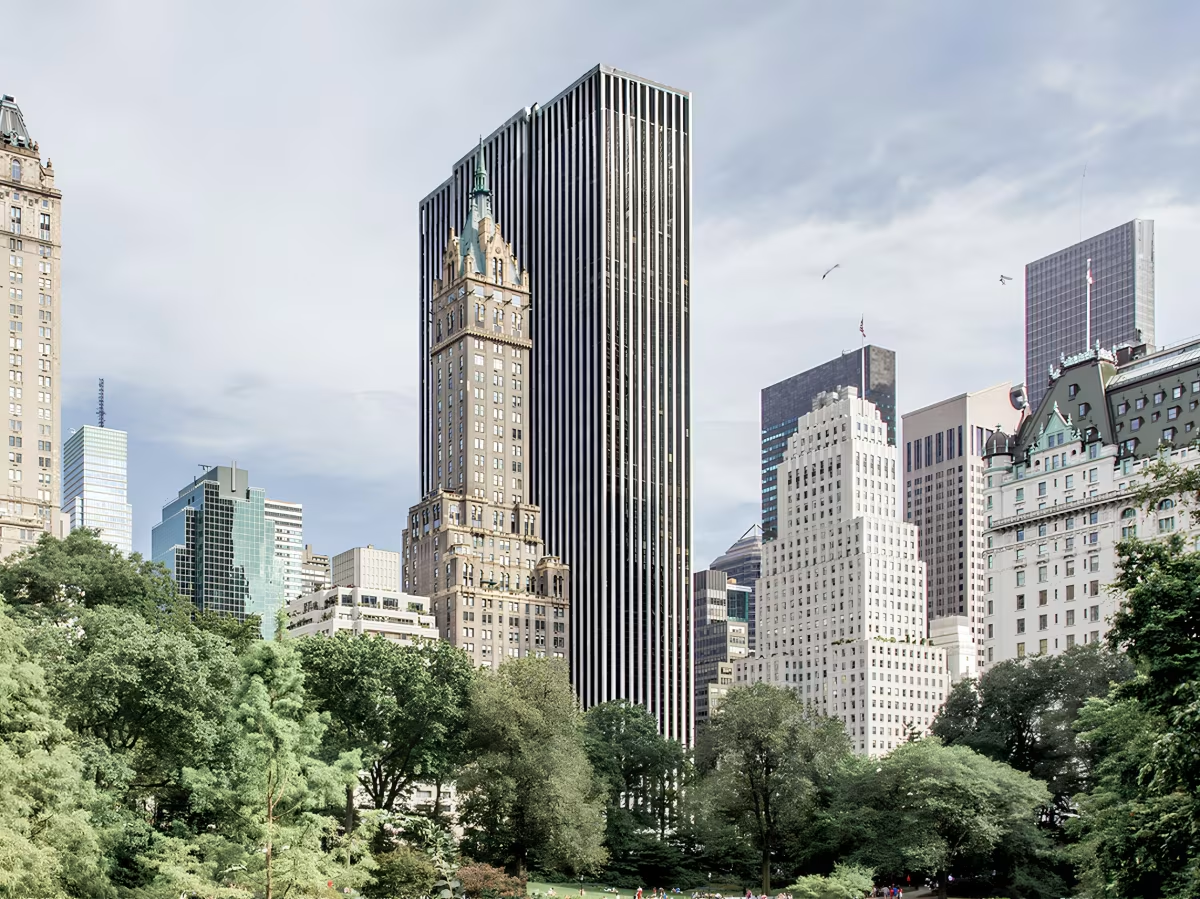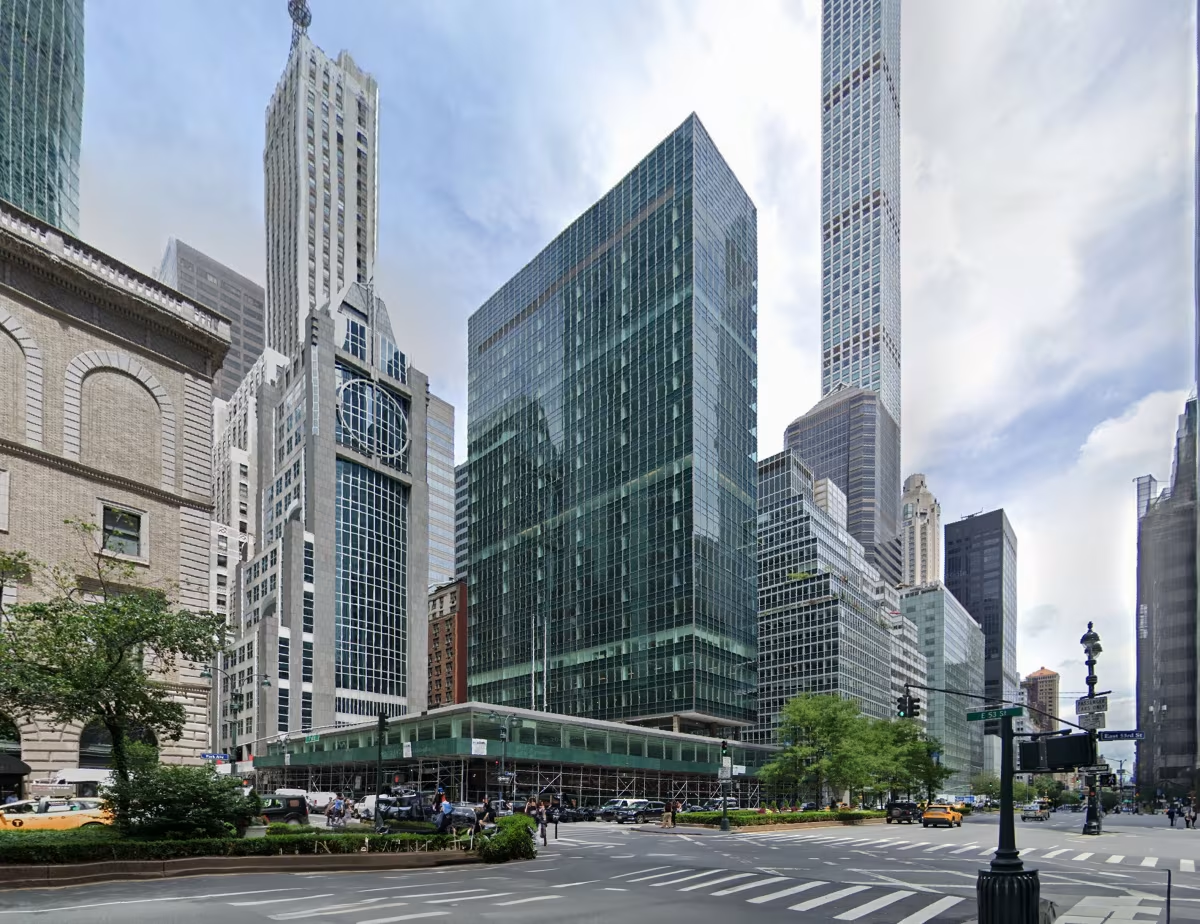General Motors Building vs Lever House


Comparing the General Motors Building and the Lever House is interesting because they both rise in New York, NY, yet they were conceived by two different design teams, Edward Durell Stone & Associates and Skidmore, Owings & Merrill, and were completed at different points in time. They were finished more than a decade apart.
This contrast within the same city allows us to see how different creative minds interpreted the evolving needs of New York across time.
Let's take a closer look!
Height & Size
The General Motors Building is clearly the larger tower of the two, both in terms of height and number of floors. It rises to 705ft (215m) with 50 floors above ground, while the Lever House reaches 307ft (93.57m) with 21 floors above ground.
General Motors Building also offers more total built-up area, a total fo 1,824,815 sqf (169,531m2), which is about 1,561,870 sqf (145,103m2) more than what the Lever House offers.
Of course, each project may have faced different briefs or regulatory constraints, which we don't really know about and could also explain the outcome.
Architectural Style
Both the General Motors Building and the Lever House were designed in line with the aesthetic conventions of the International Style style.
At the time, this style was at the height of its popularity. So both Edward Durell Stone & Associates and Skidmore, Owings & Merrill followed what was in many ways expected of them, producing designs that fit comfortably within contemporary architectural norms, rather than breaking with convention.
Uses
Both the General Motors Building and the Lever House were designed to serve as commercial towers, and that has remained their main use since their completion, serving similar roles in the urban fabric.
The General Motors Building also provides 136 parking spaces.
Structure & Facade
Both the General Motors Building and the Lever House rely on a Frame structural system.
A frame structure uses a grid of columns and beams to carry the building's loads. This frees the walls from structural duties, allowing for flexible floor plans and larger windows.
They also employ the same type of facade, a Curtain Wall facade.
A curtain wall is a non-load-bearing facade hung from the structural frame. It is anchored to floor slabs and transfers only its own weight and wind loads, allowing for sleek, glassy exteriors.
| General Motors Building | Lever House | |
|---|---|---|
| Edward Durell Stone & Associates | Architect | Skidmore, Owings & Merrill |
| 1965 | Construction Started | 1950 |
| 1968 | Year Completed | 1952 |
| International Style | Architectural Style | International Style |
| Commercial | Current Use | Commercial |
| 50 | Floors Above Ground | 21 |
| 2 | Floors Below Ground | 1 |
| 215 m | Height (m) | 93.57 m |
| 169531 | Built-up Area (m²) | 24428.38 |
| Frame | Structure Type | Frame |
| Steel | Vertical Structure Material | Steel |
| Concrete, Steel | Horizontal Structure Material | Reinforced Concrete |
| Yes | Facade Structural? | No |
| Marble, Glass | Main Facade Material | Glass, Aluminum, Steel |
| Jaros, Baum & Bolles | MEP Engineer | Jaros, Baum & Bolles |
| NY | State | NY |
| New York | City | New York |
| 767 5th Avenue | Address | 390 Park Ave |